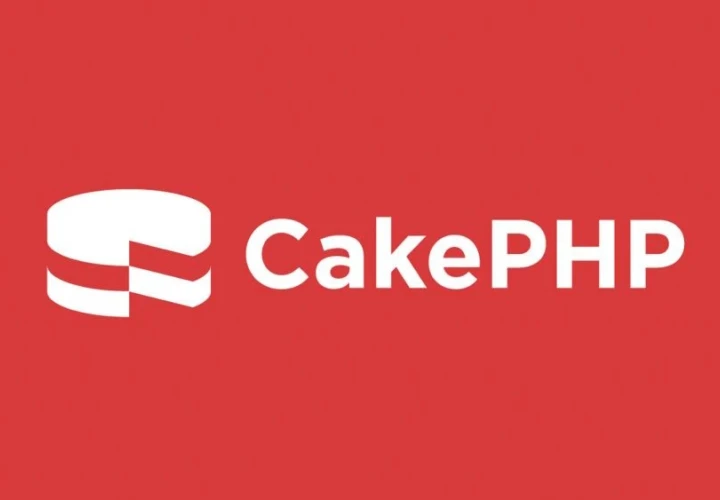Web application development today requires more than just writing functional code. Clients expect fast, stable, and secure systems, while developers look for a framework that enables efficient development without compromising quality. This is where CakePHP truly shines. This PHP framework provides a structure and tools that simplify complex processes, allowing teams to focus on creating real value rather than routine tasks.
CakePHP is designed to accelerate development through a modular approach and automatic generation of basic code, while embedding security measures that protect applications from common threats. The result is a web application that is functional, reliable, scalable, and ready for long-term growth.
In this blog, we will explore how CakePHP enables fast and secure web application development and why it is more than just a framework — it is a tool that streamlines the entire development process and professionally positions a web project.
Faster Development through Scalability and Modularity
MVC Architecture
CakePHP uses the Model-View-Controller (MVC) architecture, which clearly separates different parts of an application. Models handle data and business logic, the View layer is responsible for rendering the user interface, and the Controller coordinates interactions between them. This separation simplifies code comprehension and maintenance, as each component has a clearly defined role.
As a project grows, the MVC structure makes it easier to add new features or integrate external systems without compromising the stability of existing modules. In short, MVC in CakePHP provides a solid organizational foundation, keeping complex projects manageable and maintainable throughout the application lifecycle.
Integrated Testing Workflow
CakePHP supports unit and integration testing, simplifying bug detection and ensuring safer implementation of changes. In medium- to large-scale projects, integrating testing into the development process reduces the risk of unexpected issues and accelerates the stable release of new application versions.
Support for Multiple Databases
CakePHP allows working with multiple database connections, providing significant flexibility in choosing the data architecture for a project. Multiple configurations can be defined and managed in code — for example, a primary database for users, a secondary one for analytics, or a dedicated database for archived data.
Officially supported systems include:
- MySQL (or MariaDB) – a common choice for web applications.
- PostgreSQL – supports advanced SQL features and higher scalability requirements.
- SQLite – ideal for smaller systems, prototypes, or lightweight needs.
- Microsoft SQL Server – integrates with Microsoft enterprise environments.
- Oracle Database – available via a shared plugin, useful for enterprise solutions using Oracle.
This versatility ensures applications can use the optimal database system depending on performance, infrastructure, or licensing needs. As a project grows, new connections or database migrations can be implemented with minimal changes to code or architecture.
CRUD Operations and the Bake Tool
CakePHP automates the generation of basic Create, Read, Update, and Delete functionality, significantly reducing routine coding and speeding up development. The Bake tool further enhances productivity, allowing rapid creation of prototypes and initial application versions. This enables teams to validate ideas, present functionality to clients, and adapt them before final implementation. Bake-generated code is stable, readable, and ready for extension, making development more predictable and efficient.
Modular Architecture and Plugins
CakePHP supports a modular development approach, allowing each feature to be implemented as a separate module or plugin. This approach enables the addition of new functionality without altering existing code, which is particularly valuable in growing and evolving projects. Instead of extensive refactoring, modules can be easily integrated with the system. Components developed for one project can also be reused in others, increasing consistency and reducing future development time.
Convention over Configuration
CakePHP follows the principle of “convention over configuration,” meaning the framework automatically recognizes standard naming patterns and code structure. This eliminates lengthy setup and configuration, allowing developers to start implementing features immediately. By reducing time spent on technical configuration details, teams can focus on delivering real value through business logic and user experience. Clearly defined conventions also ensure code remains organized and consistent, making it easy to understand even when new team members join. This approach significantly boosts productivity and ensures projects remain stable and maintainable throughout their lifecycle.
Integration with External Services
CakePHP includes built-in capabilities for reliable integration with APIs and external services, simplifying connections to modern systems like payment platforms, CRMs, or notification services. The framework provides clean, well-documented methods for system communication, eliminating the need to manually handle complex requests and authentication. This reduces the risk of errors and ensures stable data exchange. In practice, new integrations can be implemented quickly and securely without compromising performance or code maintainability. Additionally, CakePHP’s flexible architecture allows integration capabilities to expand as project needs evolve.
Security Built Into Every Step
Automatic Data Escaping in Views
CakePHP includes a built-in mechanism that automatically escapes data displayed in the user interface, effectively preventing XSS (Cross-Site Scripting) attacks. This ensures that potentially malicious user inputs cannot compromise the application or end users. Developers do not need to rely on manual security checks, as the framework consistently applies protection at all levels of data rendering. This feature enhances security while simplifying development, giving developers confidence that every displayed piece of data is properly handled without extra code. The result is a safer, more stable, and faster-developed user interface.
User Input Validation and Sanitization
CakePHP provides a robust system for validating and sanitizing input, automatically checking and cleaning all data before it is stored in the database. This approach eliminates the risk of SQL injections, invalid data formats, and other common security threats. Validation rules are defined clearly and centrally, simplifying maintenance and adjustments throughout the application lifecycle. Beyond security, this mechanism ensures data quality and consistency, automatically discarding or correcting invalid or incomplete inputs. This reduces the need for manual verification, keeping the application stable and reliable even with high user interaction.
CSRF Protection and Security Tokens
One common web attack is Cross-Site Request Forgery (CSRF), where an attacker tricks a user into performing an unwanted action. CakePHP automatically generates security tokens for each form and user action, ensuring that requests originate from legitimate sources rather than potentially malicious external sites. This protection operates transparently for users while freeing developers from manually implementing complex security mechanisms. The result is a reliable and seamless protection system that safeguards the application without impacting performance or user experience.
Authentication and Authorization
CakePHP includes an advanced authentication and authorization system, allowing precise control over user access. Developers can easily define different privilege levels, roles, and access rules for specific resources — whether for users, administrators, or external collaborators. The framework securely manages sessions and credential storage, reducing the risk of misuse or unauthorized access. Integration with modern login methods (OAuth, JWT, LDAP, etc.) further enhances system flexibility and security. This enables CakePHP applications to maintain a reliable, scalable, and centralized user management system that grows with business needs.
HTTPS and Encryption Support
Secure communication between users and servers is now standard, and CakePHP simplifies implementation with built-in HTTPS support and advanced encryption methods. The framework facilitates SSL/TLS certificate usage and provides tools to protect sensitive data, such as passwords, API keys, and personal information. With integrated encryption and decryption classes, developers can safely store and process data without relying on additional libraries. This ensures that applications comply with modern security standards, which is particularly critical for systems handling financial transactions, healthcare information, or other confidential data.
Additional Advantages of CakePHP
Internationalization and Localization
CakePHP comes with a built-in system for internationalization (i18n) and localization (l10n), allowing easy management of multiple languages and regional settings. Texts, messages, validation errors, and user interfaces can be easily translated and adapted to target markets without duplicating code. The framework automatically recognizes local date, time, currency, and number formats, contributing to an authentic user experience. This feature is particularly valuable for global brands and multi-market projects, providing a personalized experience to users worldwide with minimal development effort. CakePHP also offers simple tools for managing translations and local files, making multilingual application maintenance more efficient and sustainable.
Event-Driven Architecture
An advanced feature of CakePHP is its event-driven architecture, which allows applications to respond to system events without complex or hard-to-maintain code. Developers can define event listeners and handlers that automatically execute actions when specific changes occur — for example, sending email notifications after user registration, logging activities, or triggering background tasks. This approach increases code modularity and flexibility, enabling new features to be added without modifying existing parts of the application. Event-driven architecture simplifies integration with external services and improves performance and maintainability in dynamic environments with constantly changing requirements.
Caching and Performance Optimization
CakePHP includes built-in caching and performance optimization mechanisms that significantly accelerate application performance. Cache systems store query results, rendered pages, or page fragments, reducing the number of requests to the server and database. The framework supports various types of caching, including File, APCu, Redis, Memcached, and more, allowing adaptation to the specific needs of the application.
This optimization is particularly valuable in systems with many users or large data volumes, reducing latency, improving responsiveness, and lowering infrastructure load. Additionally, CakePHP provides profiling and performance monitoring tools to help developers identify bottlenecks and further optimize their applications.
Robust Documentation and Community
CakePHP is a mature framework with nearly twenty years of experience, making it a stable and reliable choice for web application development. Its strength is further enhanced by an active developer community that regularly contributes updates, security patches, and a rich repository of plugins and extensions.
Documentation covers everything — from basic guides and tutorials to detailed references for advanced functionality, enabling teams to quickly adopt best practices. The community also shares ready-made solutions and libraries for common needs, accelerating development and reducing costs.
 Web Technologies
Web Technologies
 Web Technologies
Web Technologies
 Web Technologies
Web Technologies







